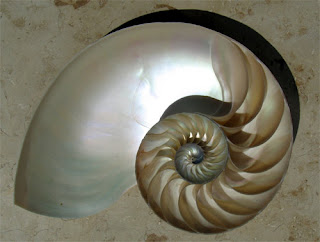The Golden Ratio looks like this:
It's defined as the ratio between two segments such that the smaller (bc) segment is to the larger segment (ab) is to the sum of the two segments (ac), or bc/ab = ab/ac = 0.618.
And can be calculated like this (adding 1 to the ratio is phi, yielding the same basic geometric relationship):
More examples of the Golden Ratio:
Fascinating! Is it an inherent aesthetic preference or is it a design technique turned tradition? How do you explain the proportion found in nature? However you decide to answer those questions, it’s hard to argue that it has had an enormous impact on art and design over the years and continues to influence design today. Next time you see something that just “feels” right, or that you just can’t take your eyes off of, take a look at the proportions and remember – Ahh, it must be the 0.618!
- Ryon










No comments:
Post a Comment